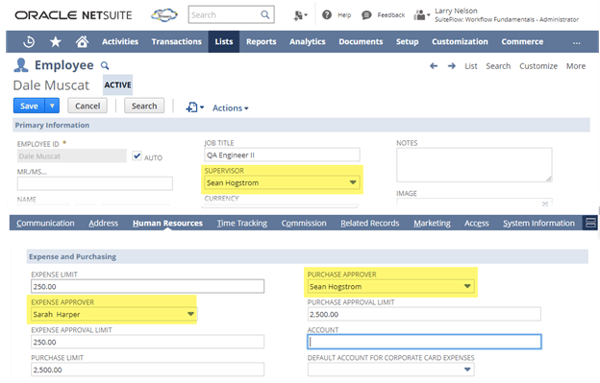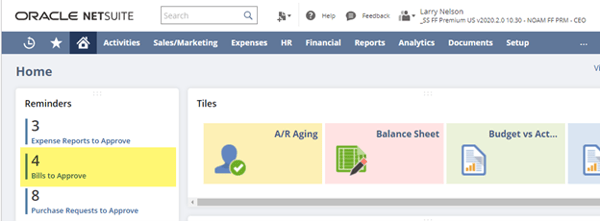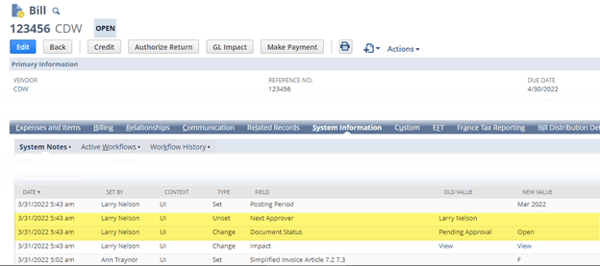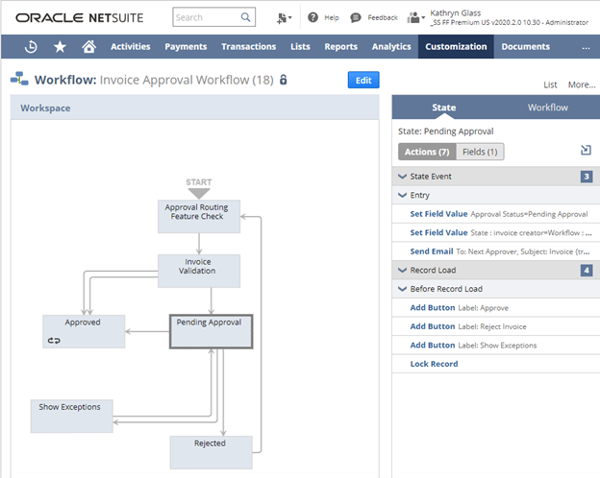When people think of workflows in an ERP system, they generally think about approval workflows. However, NetSuite’s workflow management system, SuiteFlow, extends that definition by allowing your ERP system to work smarter for you.
SuiteFlow helps automate your business processes through approvals, alerts, record updates and more. All the workflows in NetSuite can be managed with their easy-to-use, low code/no code, point-and-click diagramming solution.
Approval Workflows
NetSuite includes out-of-the-box approval workflows for many tasks in the system. When an employee is configured within NetSuite, they’re assigned to a supervisor and business role(s) that can be used to determine approvers for the workflow. Workflow approvers can be further defined for tasks, such as purchases and expense report approvals.

When a document such as a vendor bill, expense report or journal entry is entered into NetSuite, it will be routed through the out-of-the-box workflow approval process.
For example, let’s say I’m the accounts payable clerk – Ann. When I enter a bill into the system and save it, that bill is assigned to the “Pending Approval” status.

My supervisor, Larry, would then receive an email alert and a reminder on his home page that there’s a bill to approve. He could then approve the vendor bill to complete the approval workflow.

Additional logic could be built into the workflow for things like approval dollar limits and department-based approvals. And, as with everything in NetSuite, a full audit trail is provided to view the approvals that occurred.

Business Process Workflows
Every organization has business processes that are executed daily to keep things running smoothly. For example, let’s say you have a business rule that if a customer’s balance is over $5,000 and is more than 30 days past due, they go onto credit hold and their sales rep is notified.
The traditional process might be for an accounts receivable clerk to review an aging report once a week to find any customers who meet the business rules. From there, they would pull up the customer in the ERP, put them on credit hold and open Outlook to send an email to the sales rep letting them know about the outstanding balance and credit hold.
With SuiteFlow, this entire process can be automated. A “saved search” could be created returning any customers with a balance over $5,000 and more than 30 days past due. A workflow can then be scheduled to run each day (or at whatever interval works for your business) based on the results of the saved search. The workflow would update the customer’s credit hold status and send an email alert to the customer’s sales rep.
SuiteFlow can also be used on forms within NetSuite to perform certain tasks, such as hiding fields that aren’t needed based on vendor or customer types, calculating discounts on orders based on products sold and defaulting field values to save time and limit errors in data entry.
Managing Workflows
All the workflows in NetSuite can be managed graphically using the SuiteFlow workflow tool. No coding is required, although all workflows can be extended using low code SuiteScript for additional functionality.

Key Takeaways
SuiteFlow in NetSuite enables your team to be more efficient by allowing the system to perform many of the repetitive tasks that users previously executed. The workflow approval process provides a full trail of approvals without the need to keep paper records. Lastly, SuiteFlow can make your data entry more accurate by implementing rules around field values during data entry.
Need Help?
If you’d like to learn more about SuiteFlow and how it can enhance your organization’s processes, contact us online or give us a call at 410.685.5512.


![[TSG] 11-9-22 ERP webinar recording image](https://www.gma-cpa.com/hs-fs/hubfs/11-9-22%20ERP%20Webinar/%5BTSG%5D%2011-9-22%20ERP%20webinar%20recording%20image.png?width=500&height=500&name=%5BTSG%5D%2011-9-22%20ERP%20webinar%20recording%20image.png)